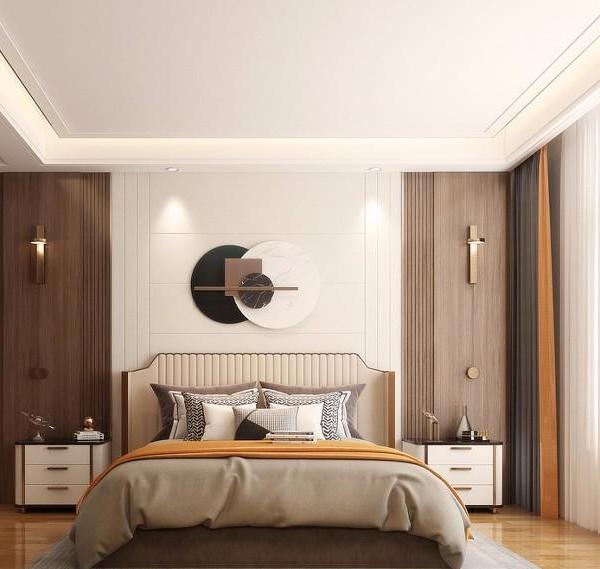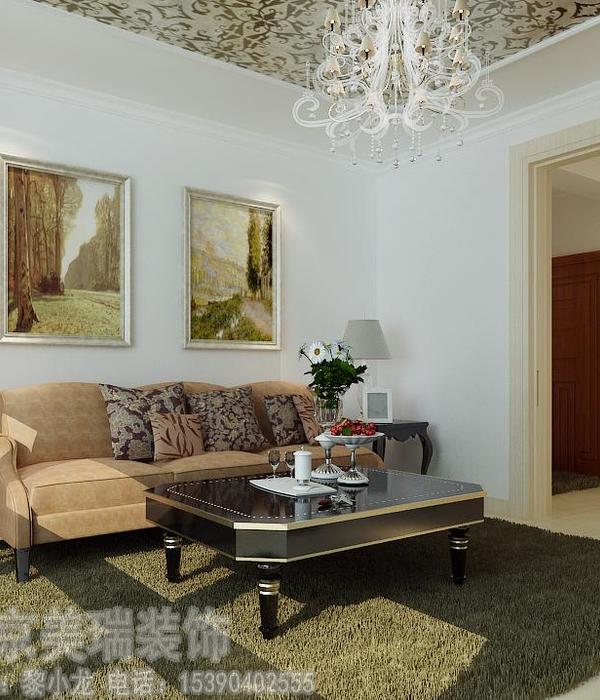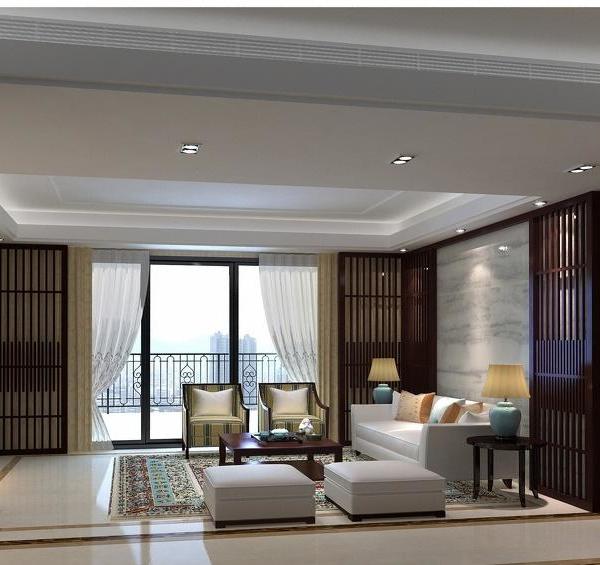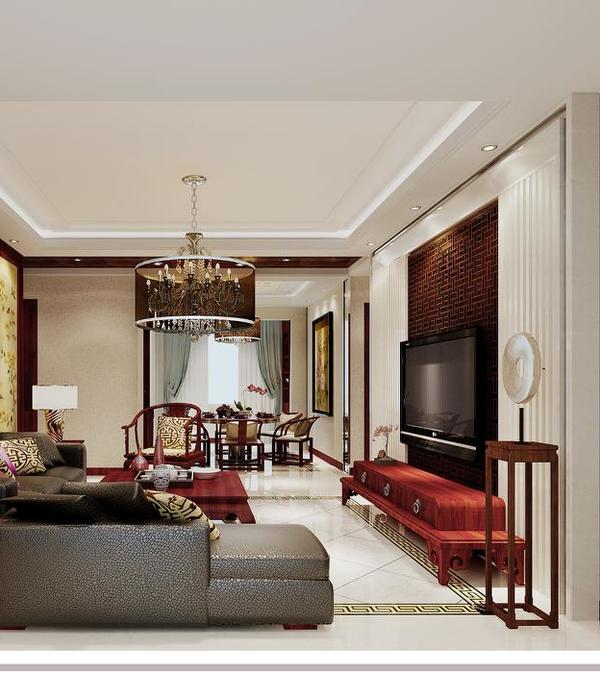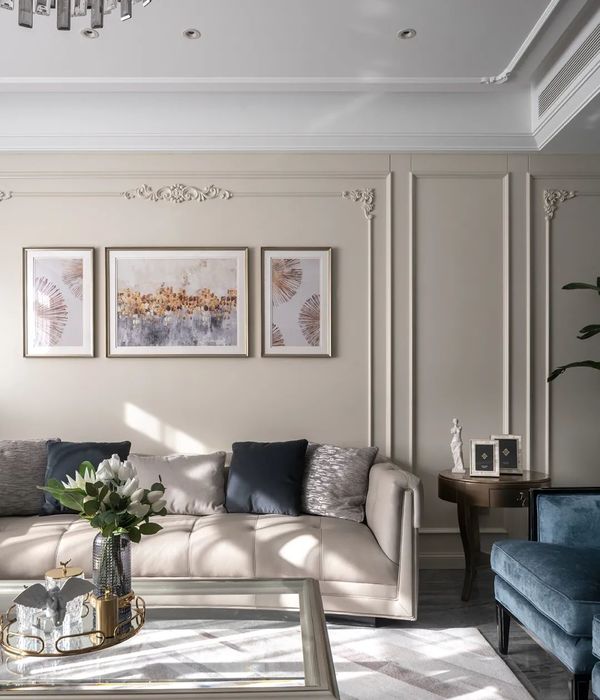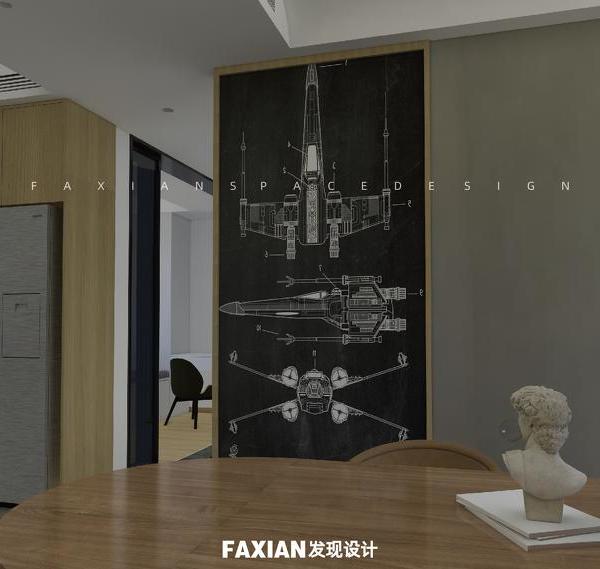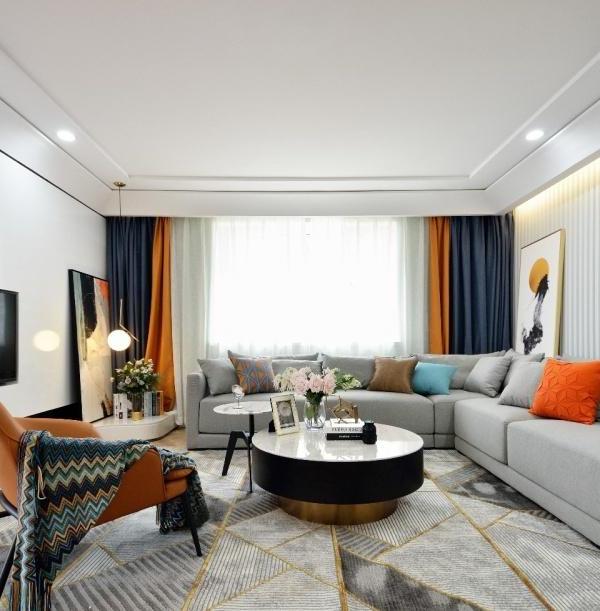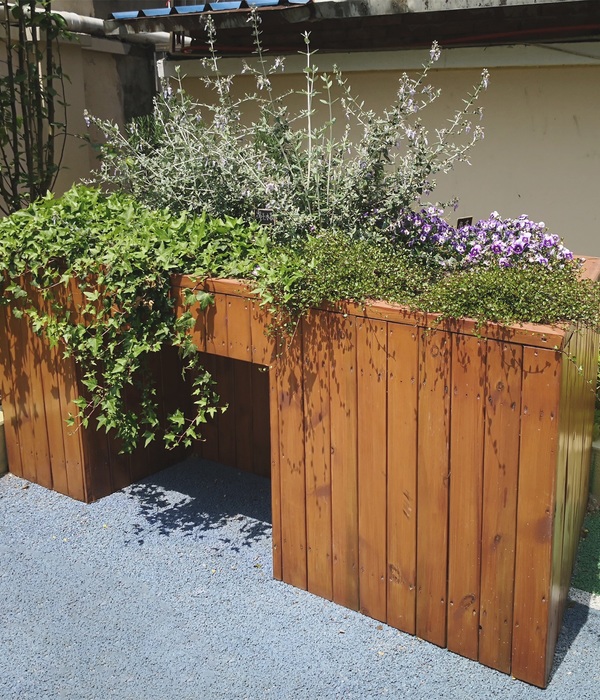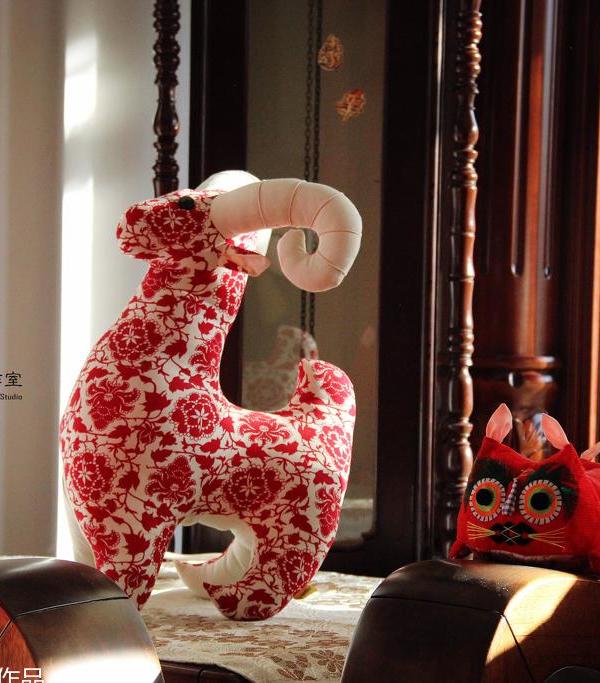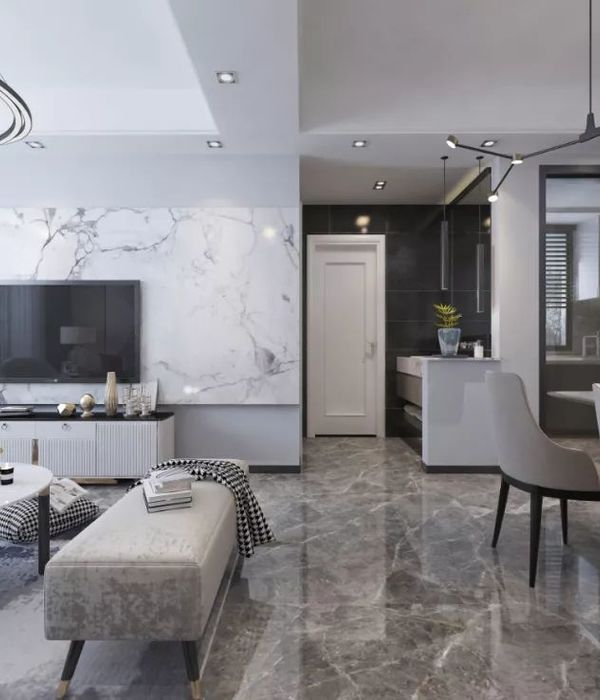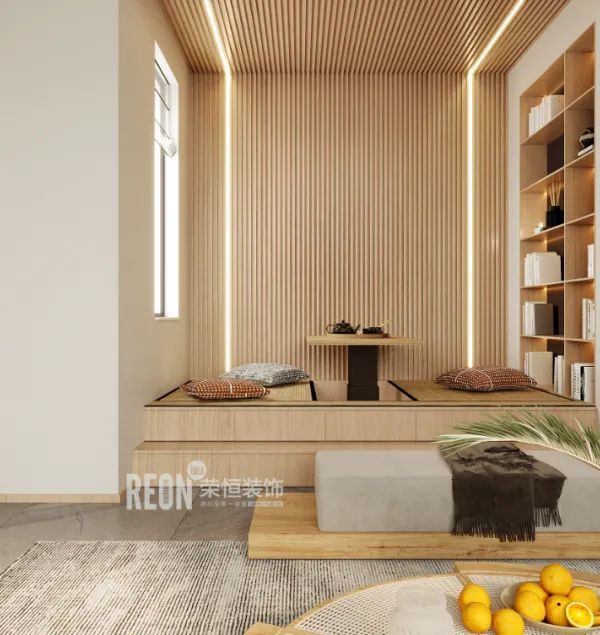广州莲麻村生态雨水花园 | 低技策略与废旧材料利用
来自
傅英斌
Appreciation towards
FuYingbin
for providing the following description:
广州莲麻村生态雨水花园位于广州市从化区莲麻村村委会附近,包括村委会前已经硬化的场坝及南侧的空地,基地面积 670m2。项目于2015年7-8月开始设计,整体于11月竣工。接手项目时,村委会前场坝空间局促单调,缺少活动及休憩设施 ;南侧空地原为废弃鱼塘,由于地势低洼,周围多个雨水口汇集于此,造成常年积水加之垃圾倾倒遍地无人清理,成为影响周围环境和村民生活质量的问题地块。 莲麻村近年实施雨水工程和管线铺设,但由于沿用建设城市的惯性思路,地面过度硬化,农村区域又缺少人员及时管理维护,每逢雨季,地表径流大面积滞留,无法及时存蓄下渗到周边的自然土壤。在推进现代化市政设施建设同时,设计中忽视必要的生态措施,使自然生态的乡村水循环系统遭到破坏,依靠排水管道的雨洪管理方式不能完全“代谢”;由于硬质化造成地表水土流失、局域本底环境改变、本地植-物凋零等生态问题。设计以水为切入点,针对场地问题,试图塑造亲切闲逸的邻水活动空间,重拾岭南乡村以水叙事的传统,探索乡村公共活动与生态景观的融合。
Lianma Village Ecological Rainwater Garden located in Guangzhou City near the village of Lianma village area. Space is cramped and monotonous, lacking of activity and amenity. During the rainy season, due to lack of management and maintenance, the ground is overvulcanization, surface runoff stranded. The entry point of design is water, addressing the space issues, trying to shape a leisure space near water, regaining Lingnan water narrative tradition and exploring the fusion of rural public events and ecological landscape.


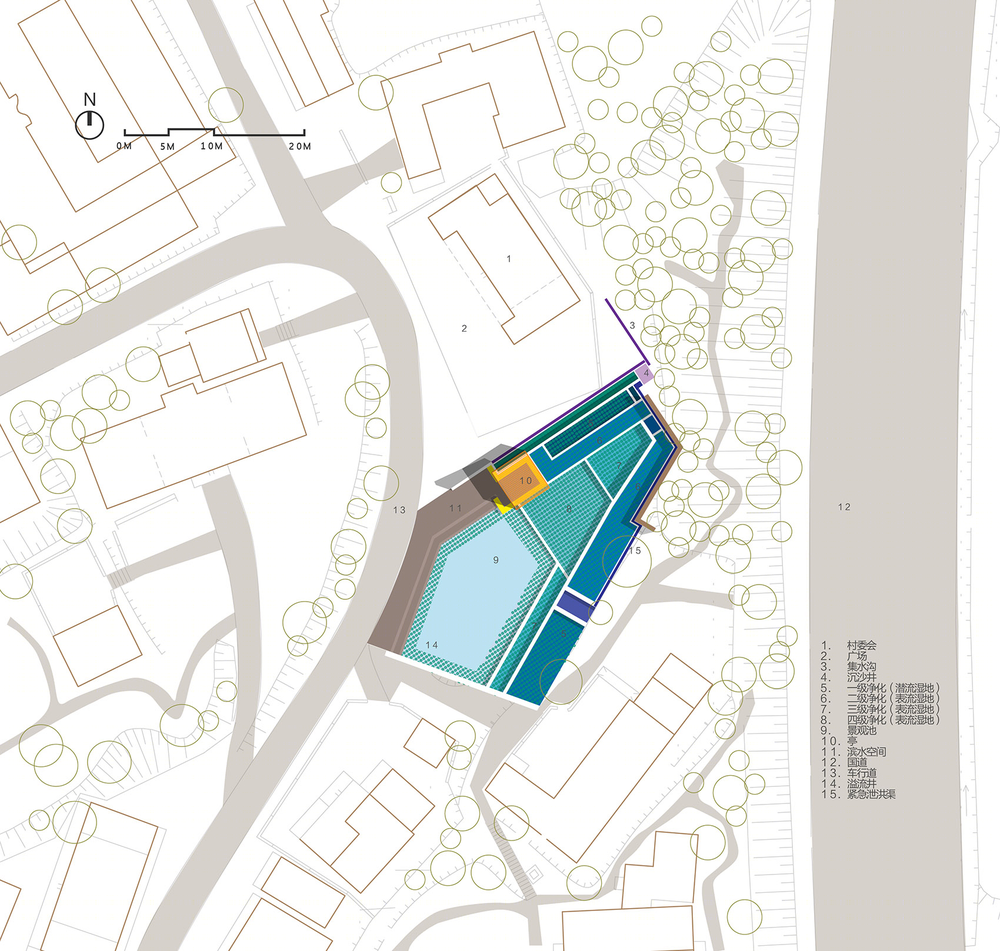
1) 通过打破场地边界,将鱼塘与村委会广场连接为一体,破除村 委会的行政化印象,提升村委广场的亲合力 ;增加滨水活动及亲水空间,将原本局促的车行道转弯予以拓展,提高舒适度;植入景观构筑, 改变原有视线焦点,将人的活动引入场地,丰富场地的空间形态。
1) By breaking the boundaries of the site, the village committee square integrally connected with a fish pond, get rid of the impression of the village administration, enhance the affinity of village committee. Also increase waterfront activities and the hydrophilic space, expanded the originally cramped street as well as implants landscape construction, change the original focus attention, introduct human activity, rich space form.


2) 运用海绵效应,就地化解矛盾。将雨水就地蓄留、就地消化旱涝问题,即通过简单的挖方和填方,解决低洼地的积水问题,形成了洼地与高岗地相结合的“海绵”系统。将雨水快速排掉,是排水工程的基本目标,这种行为却会导致洪水被聚集和加速,其破坏力被强化、上游的灾害转嫁给下游 ;硬化工程导致水与生物分离、水与土地分离。通过简单的填挖方,可以建立梯田,减缓山坡下来的地表径流,削减洪峰强度,调节季节性雨水流量 ;它们的方位、形式、深度都依据地质、地形因素和水流分析而设定。这些梯田状栖息地根据不同的水质和土壤环境种植了乡土植被,减缓了水流,使水中的污染物和营养物质被土壤微生物和植物所吸收。 生态雨水花园设计将与雨水对抗变为和谐共生,充分利用广州地区降雨充沛、气候湿润的特点,形成雨季旱季差异性景观,将环境教育、生态示范与景观结合。
2) We decide to use sponge effect resolving site conflicts. By accumulating rainwater in site to solve drought and flood issue, excavating and filling land to form a “sponge” system combination with lowland and highland. Filling and cutting terrace to slow down the surface runoff, reduce peak intensity and regulate seasonal rain runoff. The location, form and depth of terrace are set based on geology, topography and water analysis. Depending on water quality and soil environment, the terrace-like habitats planted with native vegetation to slow down water flow, so that the water contaminants and nutrients are absorbed by soil microbes and plants. Ecological Rainwater Garden proposed to coexist with rain, to take advantage of the abundant rainfall and humid climate characteristics in Guangzhou. And finally different the landscape view both in dry and rainy season.

2 雨水净化 Rainwater Purification
Ecological Rainwater Garden is a living rainwater purification system, rainwater process through biological treatment in an artificial wetland system to achieve the rainwater purification effect. Rainwater entering the wetland system after large particles and suspended solids are removed in grit chamber. Project will be described by a series of purification principles and procedures in graphic,and give instructions to describe each plant. We aim to purify rain as well as educate and spread ecological and rainwater purification knowledge to tourists, make the rainwater purification processes are visualized readable. The main node flow inlet and outlet, overflow channels, and important details are designed to show to the tourists. The entire process is visualization readable.
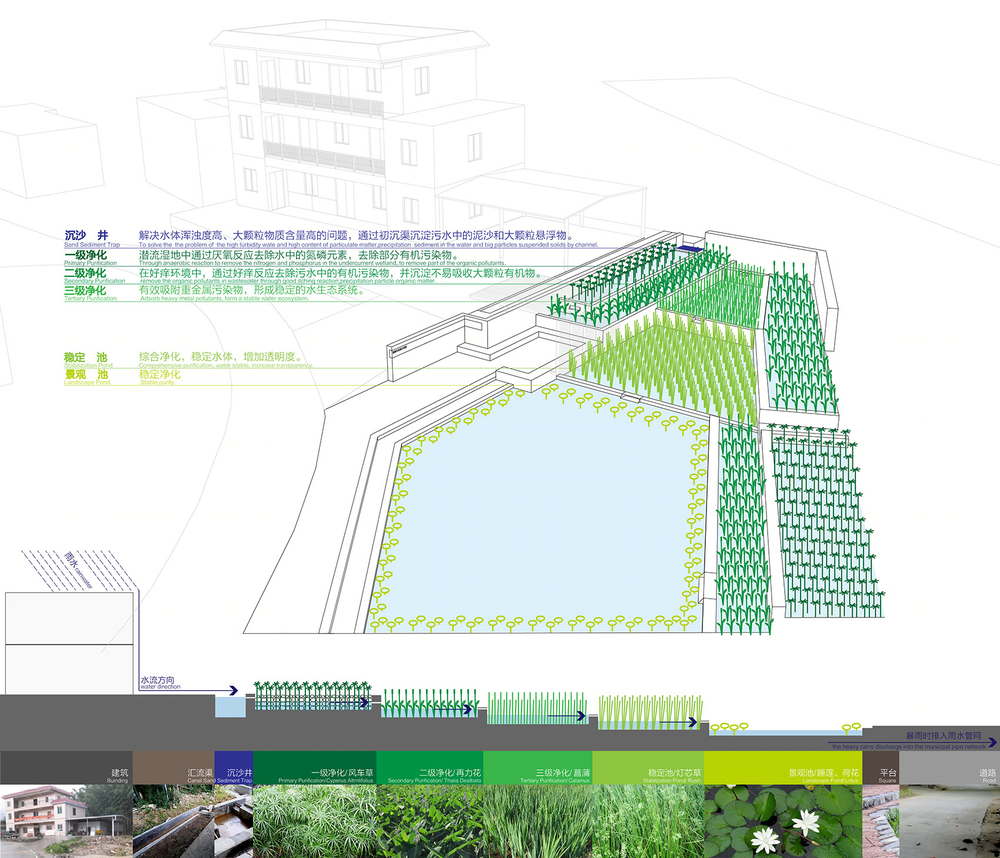
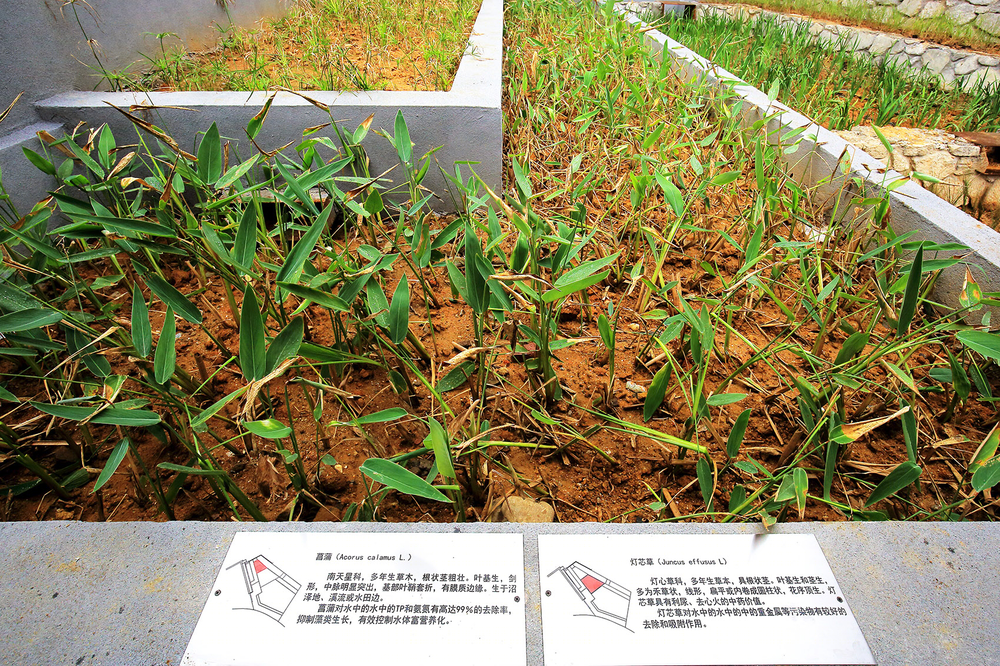
3 低技策略 Low Technology Policy
低技策略首先体现在聘请本地石匠。由于乡村工匠普遍无法看懂图纸,现场 90% 的工程量由设计师亲自参与放线以及动手示范工艺,经验建造作为施工主线贯穿始终,并且产生了许多意外的效果。现场调整施工工艺,材料选择,甚至平面形态在施工过程中都在不断进行调整, 整个施工过程也是一个再设计过程。当地工人由于缺乏正规施工训练,无法将场地砖缝铺砌整齐,因此设计师调整了工艺要求,顺应施工水平对砖缝问题不做要求并引导工人,地面铺装采用红砖立铺,将原本的施工错误变成特殊铺装效果,在地面形成了起伏波动的砖缝效果。村民积极参与施工过程,妇女参与了竹竿的绑扎,不仅极大地节省了人工成本,还普及了竹子绑扎工艺,方便将来的维护维修,村民无需请技术工人就可以自行修复破损,为村庄的改造建设提供了工艺样本。这种共同参与的建造方式也激发了村民的主动性,为施工效率以及日后维护产生了积极影响。
We hire recruit local mason. The construction process is also a re-design process. Due to the local construction workers lack of formal training, designers adjusted the process requirements. Villagers also take participate in the construction process which makes positive impact to the future maintenance.
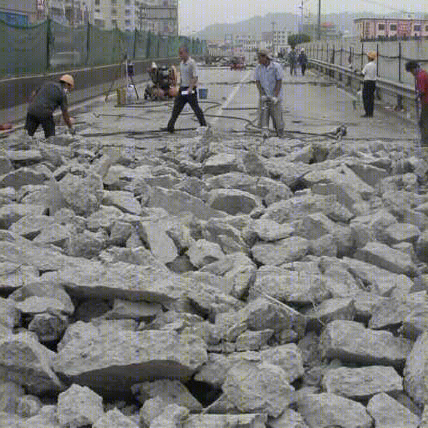
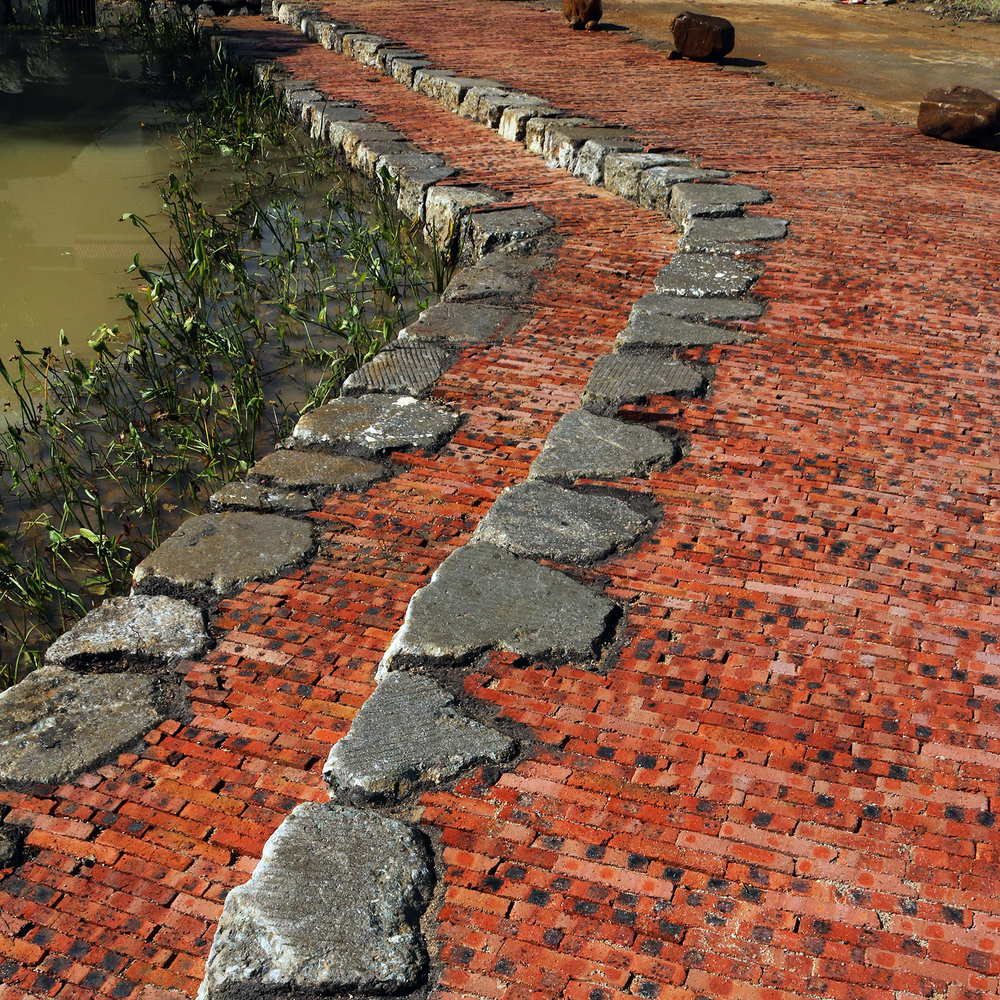
4 废旧材料利用 Comprehensive Utilization of Waste Material
项目积极采用了废弃及乡土材料等低能耗、可降解的建筑材料以减少对环境的影响。村庄附近维修道路拆除路面的大量混凝土被作为建筑垃圾运走,通过协调相关施工方,将废弃混凝土块用于挡墙砌筑和滨水石阶铺砌,结合本地红砖的地面铺装不仅极大节省了建造成本,而且通过材料的巧妙利用形成了特殊的形式语言和美学效果。核心的竹亭构筑物就地取材采用了本地竹竿,节省造价的同时体现乡土材料特色。广州莲麻村生态雨水花园建成后集生态示范、环境教育、雨洪管理、游憩休闲于一体,成为备受村民及游客欢迎的公共空间,通过对场地问题分析,结合当地的乡土营造方式,对乡村的水生态进行有效探索。
Project used local materials, low energy consumption and waste, biodegradable materials to reduce the impact on the environment. Guangzhou Ecological Rainwater Garden is a welcomed public space integrated with ecological demonstration, environmental education, stormwater management, recreation and leisure in one. Through the site analysis, the garden is constructed in a native local way. And finally take an effective exploration to the rural water ecosystem.

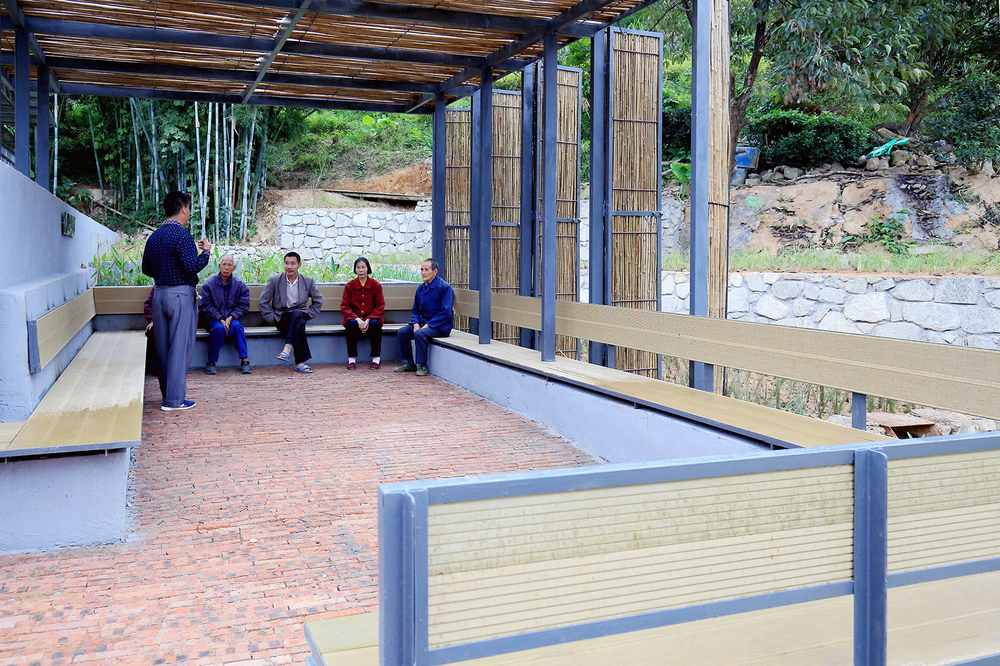
更多请至:

